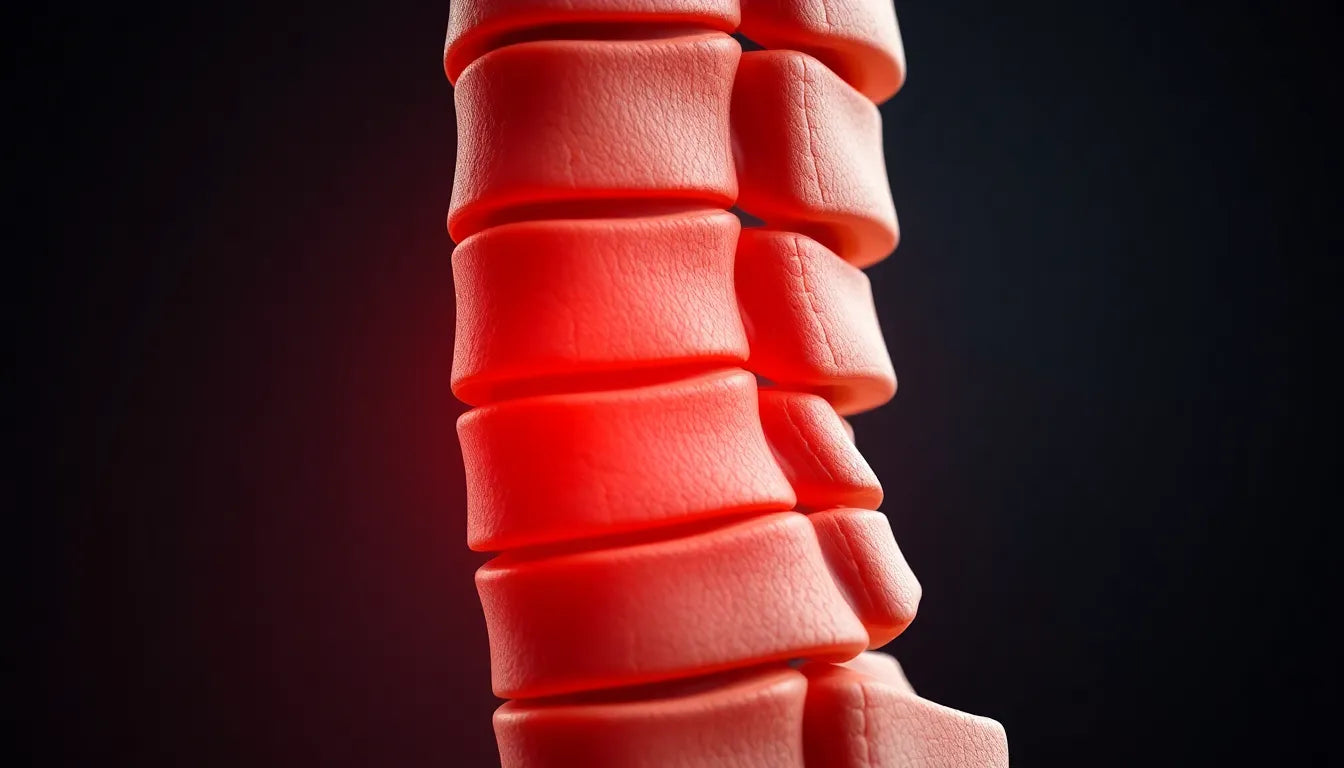When it comes to spinal health, understanding the complexities of a herniated disc is crucial. A herniated disc occurs when the soft, jelly-like center of a spinal disc pushes through a crack in the tougher exterior casing. This can result in irritation of nearby nerves, leading to symptoms such as pain, numbness, or weakness in an arm or leg. The severity of these symptoms can vary, but they often interfere with daily activities and overall quality of life. Addressing a herniated disc early is essential to prevent complications and ensure a smoother recovery process.
Exploring non-surgical solutions for herniated discs
With the increasing interest in holistic health and wellness, many individuals are seeking non-surgical methods to manage and heal herniated discs. Non-invasive treatments offer several benefits, such as reduced recovery time, lower risk of complications, and often, they are more cost-effective. These methods focus on leveraging the body's natural healing processes, providing a gentler approach to recovery.
Non-surgical options not only aim to alleviate pain but also address the root cause of the issue. Techniques such as physical therapy, acupuncture, and chiropractic care are gaining popularity for their ability to enhance mobility and reduce discomfort without the need for surgical intervention. These methods emphasize a comprehensive approach to healing, considering both physical and lifestyle factors that contribute to spinal health.
Setting realistic expectations for natural healing
Understanding the body's natural healing process is key to setting realistic expectations when dealing with a herniated disc. While the body has an impressive ability to repair itself, this process takes time and requires consistent effort. Patience is crucial, as natural healing can vary significantly from person to person based on factors such as age, overall health, and the severity of the herniation.
Consistency in treatment is equally important. Engaging in regular physical therapy sessions, maintaining a healthy diet, and making ergonomic adjustments in daily activities can significantly support the healing process. By committing to these non-surgical treatments, individuals can often experience substantial relief and improved function over time.
In the journey to repair a herniated disc, embracing a holistic and patient-centered approach can pave the way for recovery without the need for surgery. By focusing on natural methods and understanding the body's capabilities, individuals can take proactive steps towards healing and regaining control over their spinal health.
exploring non-surgical treatment options for herniated discs
When it comes to managing a herniated disc without surgery, physical therapy stands out as a cornerstone of treatment. Physical therapists design personalized exercise programs aimed at strengthening the muscles surrounding the spine, enhancing flexibility, and reducing pressure on the affected disc. Exercises such as gentle stretching, core strengthening, and low-impact aerobic activities can significantly alleviate symptoms and improve spinal function. By improving the stability and support of the spine, physical therapy not only helps in pain management but also prevents future injuries.
Medication is another non-surgical approach that can provide relief. Over-the-counter pain relievers, such as ibuprofen or acetaminophen, are commonly recommended to manage pain and reduce inflammation. However, it is crucial to consult with a healthcare provider to determine the most appropriate medication and dosage, especially for prolonged use. In some cases, prescription medications or muscle relaxants may be necessary to address more severe symptoms.
Alternative therapies like acupuncture and chiropractic care also offer promising results for those seeking non-invasive solutions. Acupuncture involves the insertion of thin needles into specific points on the body to promote natural healing and pain relief. Many individuals report a reduction in pain and an improvement in overall well-being after acupuncture sessions. Chiropractic care focuses on spinal alignment, which can relieve pressure on the herniated disc and improve mobility. Chiropractors use manual adjustments and other techniques to restore proper alignment and function to the spine.
supporting the body’s natural healing mechanisms
The body has an impressive ability to heal itself, even when it comes to herniated discs. Over time, the body can reabsorb the herniated disc material, reducing pressure on the nerves and alleviating symptoms. Supporting this natural healing process involves making key lifestyle changes. Maintaining a healthy weight is crucial, as excess weight can place additional stress on the spine. Engaging in regular physical activity, within the limits of comfort and safety, helps keep the spine flexible and strong, further aiding recovery.
Additionally, incorporating ergonomic adjustments into daily life can make a significant difference. Proper posture is essential in minimizing strain on the spine. Ergonomic chairs, desks, and other aids can help maintain a neutral spine position during work and leisure activities. Setting up an ergonomic workspace is particularly important for those who spend long hours sitting, as it can prevent further aggravation of the herniated disc.
lifestyle modifications for spinal health
Diet and nutrition play a vital role in supporting spinal health and reducing inflammation. A diet rich in anti-inflammatory foods, such as fruits, vegetables, lean proteins, and whole grains, can help manage pain and promote healing. Omega-3 fatty acids, found in fish and flaxseeds, are particularly beneficial for their anti-inflammatory properties. Staying hydrated is equally important, as proper hydration helps maintain the elasticity and shock-absorbing properties of spinal discs.
Overall, repairing a herniated disc naturally involves a multifaceted approach that combines physical therapy, medication, alternative therapies, and lifestyle modifications. By embracing these non-surgical methods, individuals can support their body’s natural healing processes and improve their quality of life. Patience, consistency, and a commitment to healthy habits are key to achieving lasting relief and preventing future spinal issues.
When to consider professional help for a herniated disc
While many individuals find relief from herniated disc symptoms through non-surgical methods, there are instances when professional medical intervention becomes necessary. If you experience severe pain that does not improve with conservative treatments, or if you encounter significant weakness, numbness, or loss of bladder or bowel control, it is crucial to seek medical attention promptly. These symptoms may indicate a more serious condition requiring immediate evaluation.
In cases where non-surgical treatments fail to provide adequate relief, minimally invasive surgical options, such as microdiscectomy or endoscopic discectomy, may be considered. These procedures aim to relieve nerve pressure by removing the herniated portion of the disc with minimal disruption to surrounding tissues. Consulting with a specialist can help determine the most appropriate course of action based on individual circumstances.
Real-life success stories: healing without surgery
Many individuals have successfully managed their herniated discs without resorting to surgery, thanks to dedicated adherence to non-surgical treatment plans. For example, Sarah, a 45-year-old office worker, experienced debilitating back pain due to a herniated disc. Through a combination of physical therapy, acupuncture, and ergonomic adjustments at her workspace, she gradually regained mobility and reduced her pain levels significantly. Her commitment to lifestyle changes, such as regular exercise and a healthy diet, played a vital role in her recovery.
Similarly, Mark, a 50-year-old avid golfer, avoided surgery by incorporating chiropractic care and targeted exercises into his routine. By focusing on strengthening his core and maintaining proper posture, he was able to return to his favorite sport without discomfort. These stories highlight the importance of personalized treatment plans and the potential for natural healing when individuals commit to their recovery journey.
Frequently Asked Questions
Can a herniated disc repair itself?
Yes, a herniated disc can often repair itself over time. The body has the ability to reabsorb the herniated material, which can alleviate pressure on the nerves and reduce symptoms. This natural healing process can take several weeks to months, depending on the severity of the herniation and individual health factors.
What is the best treatment for a herniated disc?
The best treatment for a herniated disc varies depending on the individual's condition and preferences. Non-surgical options such as physical therapy, medication, acupuncture, and chiropractic care are often effective in relieving symptoms. It is essential to consult with a healthcare provider to determine the most suitable treatment plan based on personal needs.
How long does it take to recover from a herniated disc naturally?
Natural recovery from a herniated disc can take anywhere from a few weeks to several months. Factors such as age, overall health, and the severity of the herniation can influence the healing timeline. Consistent adherence to non-surgical treatments and lifestyle modifications can support a faster recovery.
Are there any activities I should avoid with a herniated disc?
Yes, certain activities can exacerbate herniated disc symptoms and should be avoided. These include heavy lifting, high-impact sports, and prolonged sitting or standing in poor posture. It is advisable to engage in low-impact exercises and maintain proper ergonomics to prevent further strain on the spine.
How can ergonomic aids help with herniated disc pain?
Ergonomic aids, such as supportive chairs, adjustable desks, and lumbar cushions, can significantly alleviate herniated disc pain by promoting proper posture and reducing strain on the spine. These tools help maintain a neutral spine position during daily activities, which is crucial for preventing further aggravation of the condition.
Sources
- Mayo Clinic. "Herniated Disk: Symptoms & Causes." Mayo Clinic.
- Cleveland Clinic. "Herniated Disc: Overview, Symptoms, and Treatment." Cleveland Clinic.
- Dr. Likover. "Herniated Disc Treatment Options." Dr. Likover's Website.
- Northwestern Medicine. "Herniated Disc: Symptoms, Diagnosis, and Treatments." Northwestern Medicine.
- Yale Medicine. "Herniated Disc: Innovative Treatment Options." Yale Medicine.
- Spine-health. "Herniated Disc Treatment and Recovery." Spine-health.


















